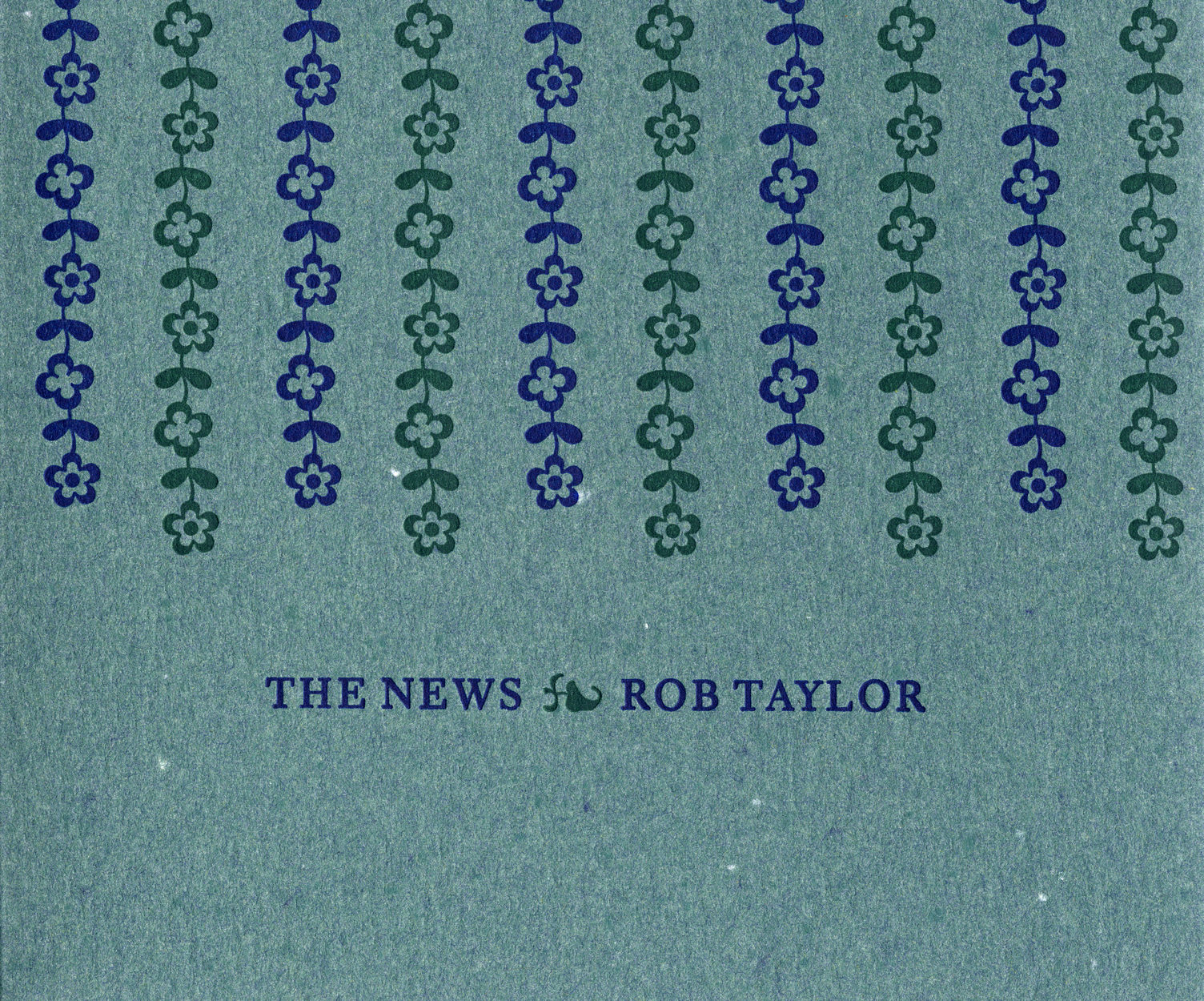
The News
Rob Taylor
Gaspereau Press, 2016
Review by Steven Brown
It’s a brave thing to do, forging a plan to write a poem a week during your wife’s pregnancy when the subject of these poems will be your wife’s pregnancy. The poet can’t guarantee what’s going to happen because anything might happen. Life is fragile. And a bit of a gamble.
What happens in the mind of a man at the prospect of fatherhood? That is essentially what The News, Rob Taylor’s new poetry collection, his second, is all about. It’s the biggest news this poet has ever got.
The poet embarks on a journey to keep his wife company on hers. And to keep himself company It’s their first baby. It’s a new shared experience, but of the profoundest kind. In a sense, while the poet is intimately involved he’s also just a spectator. He’ll give birth to the poems, that’s what he can do, while his wife is creating new life. The News is also about a lack of experience, which can be intimidating
From “Five Weeks”:
If we lose you what of you
will linger? If you last how will this
breathing, burning love divide,
sustain and multiply?
The 35 poems that follow “Five Weeks” are in chronological order, one week after another, and, equally straightforward, their titles are which week the pregnancy is in right down to the last week, “Forty Weeks”. Spoiler alert: the baby was late.
The poems are a distillation of the poet’s hope, fear and love. He is talking to his unborn child. These are intensely personal, introspective and mindful poems. Streams of consciousness. It’s “we’re having a baby”, concentrated.
From “Sixteen Weeks”:
The bloodwork is in–
a 1 in 20,000 chance
this will all go to hell
Many of the poems, the majority, as the weeks come and go, reference real-world news with the focus on the awful. This is the other “news” that comes with The News. It comes from the frequently violent, crazy world that this child will be born into.
From “Seventeen Weeks”:
A photo’s emerged of an ISIS spokesman
in a Pittsburgh Pirates cap. The franchise
has distributed a press release.
From “Twenty Weeks”:
On the day of your ultrasound
they found the Germanwings
black box
The bad news fuels the poet’s sense of responsibility, and of his vulnerability and that of his unborn child and its mother. It’s an echo chamber in which the unease and concern in having a baby on the way is played out.
From “Thirty Weeks”:
The radio talks
of the fall of Ramadi, and Sykes-Picot,
and how many people
must die for the lines on a map.
You should see
What you’re doing to your mother.
The poems are an attempt not only to communicate but alleviate, to come to grips or terms with this new, colossal undertaking and to understand the meanings and implications in the news that you’re going to be a father. In a way it’s the toughest thing the poet has ever encountered and he’s being tested. It’s heavy. This baby comes freighted with a thousand thoughts. Ten thousand. What else can you do but hope everything’s going to be okay? Double spoiler alert: it will be.
These are also poems of place. The place is Vancouver, Canada. I know that park at 10th and Fir (“Thirteen Weeks”, “Fourteen Weeks”) and I’ve made that walk from Maple Street downhill north to Kitsilano Point and the beach (“Twenty-five Weeks”). Always, wherever, thinking of a name, reading a book on child-care, attending a pre-natal class— the all-consuming daydream of The News is about the baby.
Many of these poems sample lines from the work of other poets, from Tim Bowling to Bashō to Audre Lorde to Albert Camus and more. While the effect doesn’t add anything profound to the poems that isn’t already there it’s homage, basically, and examples the author’s erudition and his commitment to what he’s doing.
It was kind of Mr. Andrew Steeves of Gaspereau Press to respond to a query regarding the physical presence of The News as a book. In itself, aside from its contents, it’s a nice presentation. True to the traditions of the press it is an objet. It’s a “Smyth-sewn” paperback with a letterpress printed paper jacket and a “bio” wrapper. The paper used for The News is called “Zephyr”, Canadian made, creamy in colour with a rough or “laid” finish. The jacket, which you hardly notice at first, thinking it’s the actual book, is a 100% cotton paper from a small mill in Montreal, made on an antique papermaking machine called a “fourdrinier”.
On the back of the jacket you’ll find that removable paper band or “bio” wrapper containing everything pertinent to the book including author photo and brief biography. The idea is that the wrapper can be replaced if any information on it needs updating. The jacket itself hasn’t been permanently branded.
The book’s cover itself, underneath the jacket, is in the exact style of the jacket’s appealing, muted, columned, floral effect in green and blue, except it’s in black and silver, somewhat reminiscent of a photographic negative. It could even symbolize the darkness The News alludes to, answered by the embrace of beauty, the truth of poetry, and hope.
This is a fine suite of poems. I hope to see more from Rob Taylor. That is, if he ever finds the time. Reports are in, the baby is already a big, bruising young boy. He may prove to be a bit of a distraction.
Steven Brown is a Vancouver writer. His reviews have appeared in Quill&Quire, The Reader, and on the Postmedia Network.